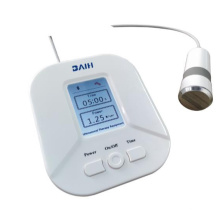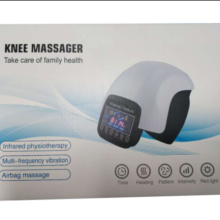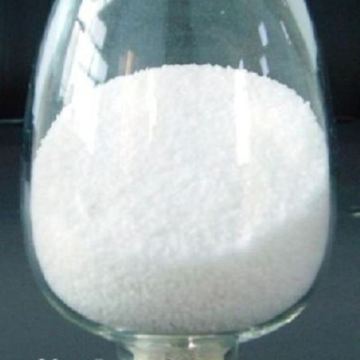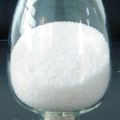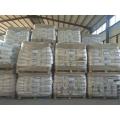Poly acrylamide macromolecule 99%CAS NO 9003-05-8
Basic Info
Model No.: cy9003-05-8
Product Description
Poly(acrylamide) macromolecule 99%CAS NO 9003-05-8
Polyacrylamide
Chinese alias: 235 acetone acrylamide solution
English Name: poly (acrylamide) macromolecule
English alias: Polyacrylamide; Acrylamide; Cationic Polyacrylamide;
CAS: 9003-05-8
Molecular formula: C3H5NO
Molecular weight: 71.07790
Precise quality: 71.03710
PSA:43.09000
LogP:0.35800
Physicochemical properties
Appearance and character: white to pale yellow granules.
Density: 1.3 g/cm3
Flash point: >230 degrees F
Refractive index: n20/D 1.452
Stability: Stable. Incompatible with strong oxidizing agents, aluminium, copper, iron, iron salts
Storage conditions: Refrigerator
security information
Customs Code: 3906901000
WGK Germany:1
Danger category code: R45; R21/22; R36/37/38; R42/43
Safety instructions: S24/25
RTECS: AS3700000
purpose
Industrial wastewater treatment: for suspended particles, higher concentration, particles with positive charge, water PH value of neutral or alkaline wastewater, steel plant wastewater, electroplating plant wastewater, metallurgical wastewater, coal washing wastewater and other wastewater treatment, the best effect. Drinking water treatment: many water plants in our country come from rivers and rivers with high content of sediment and minerals, which are relatively turbid. Although they can not meet the requirements after sedimentation and filtration, they need to add flocculant. The dosage is 1/50 of inorganic flocculant, but the effect is several times that of inorganic flocculant, and the organic pollution is serious. The inorganic flocculant and cationic polyacrylamide can be used in combination with better results. Anionic polyacrylamide is added to make starch particles flocculate and precipitate, and then the precipitate is pressed and filtered into cake shape by filter press, which can be used as feed. Alcohol in alcoholic factories can also be dehydrated by anionic polyacrylamide and recycled by filter press. For river water mud settlement. Used as dry strength agent for paper making. Polyacrylamide (polyacrylamide can be abbreviated as PAM or PAAM, and the chemical formula (-[CH2CH]nCONH2-) is a polymer polymerized from acrylamide monomer. Acrylamide needs to be treated with Good Laboratory Practices (GLP) to avoid toxicity. Polyacrylamide itself is not toxic, and it takes a long time to decompose into acrylamide monomer (AAG) at very high temperatures, so it does not decompose into AAG in humans. As for acrylamide monomer is a neurotoxin (neurotoxin), it is recommended that care should be taken. This medical device is a super absorbent material, producing colloidal substances can be used in polyacrylamide gel electrophoresis to manufacture contact lenses, cosmetics and personal appliances. It will also be used as a thickening agent and suspending agent. Recently, it has been used as a filler for facial dermis cosmetic surgery (see Aquamid). It was also known by Monsanto in 1950 as krilium as a soil conditioner and today's "MP" and labeled "unique formulation of polyacrylamide (water-soluble polyacrylamide)". Anionic polypropylene diamine is often used as a control for cultivated soil amendments and site erosion. Ionic substances such as salts can release polyacrylamide from its absorbent material. Polyacrylamide gel polyacrylamide classification: Amphionic PAM nonionic (NPAM), cationic (CPAM) and anionic (APAM). Application of polyacrylamide: 1. Polyacrylamide is a homopolymer of acrylamide or copolymer with other monomers, polyacrylamide (PAM) is one of the most widely used varieties of water-soluble polymers. 2. Polyacrylamide is widely used in petroleum exploitation, papermaking, water treatment, textile, pharmaceutical, agricultural and other industries. According to statistics, 37% of the total global production of polyacrylamide (PAM) is used for wastewater treatment, 27% for the petroleum industry, and 18% for the paper industry. 3. Polyacrylamide (PAM) has good thermal stability and is soluble in cold water. The viscosity of its aqueous solution is approximately logarithmic (i.e. linear relationship) with its concentration. Polyacrylamide (PAM) with high relative molecular weight and ultra-high relative molecular weight (more than 2000 6550 Tolerance. Principle of action of polyacrylamide: Polyacrylamide molecular chain is very long, so that it can be bridged between the two particles, accelerating the settlement of particles, is a good flocculant. Polyacrylamide and its derivatives are produced by acrylamide radical polymerization in industry. The polymerization method is divided into bulk polymerization, solution polymerization, suspension polymerization and emulsion polymerization according to the dispersion state of monomer in the medium. It is divided into homogeneous polymerization and heterogeneous polymerization according to the dissolution state of monomer and polymer. There are three forms of polyacrylamide products: aqueous colloid, powder and emulsion. Polyacrylamide (PAM) is polymerized from acrylamide. The main chain of PAM has a large number of side groups - amide groups. The amide groups have high chemical activity and can react with many compounds to produce many PAM derivatives. Amide groups can form strong hydrogen bonds with a variety of specific compounds, so it not only has flocculation, thickening, surface activity and other properties, but also can be hydrolyzed by its amide group into a polymer containing carboxyl groups, anionic polyacrylamide, polyacrylamide and formaldehyde reaction generated hydroxymethylation poly Acrylamide is an important cross-linking monomer.
Contact us if you need more details on Poly Acrylamide Macromolecule CAS NO 9003-05-8. We are ready to answer your questions on packaging, logistics, certification or any other aspects about Poly Acrylamide Macromolecule 99%CAS 9003-05-8、CAS NO 9003-05-8. If these products fail to match your need, please contact us and we would like to provide relevant information.Product Categories : Catalysts And Auxiliaries > Water Treatment Agent

